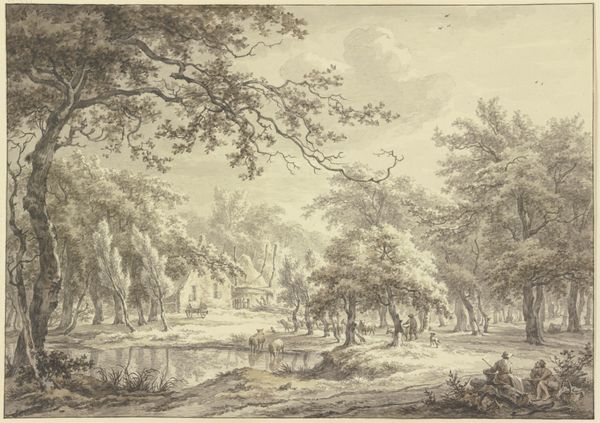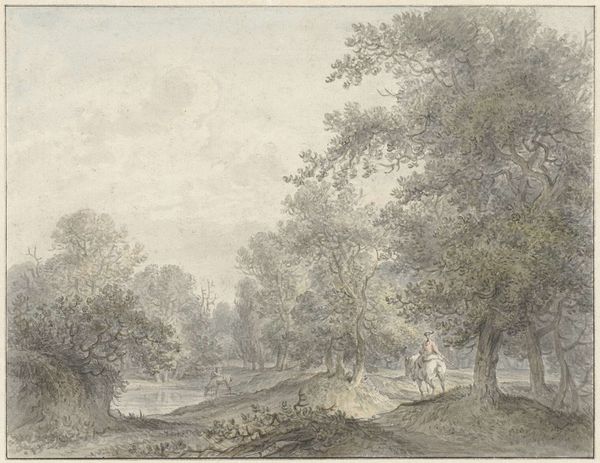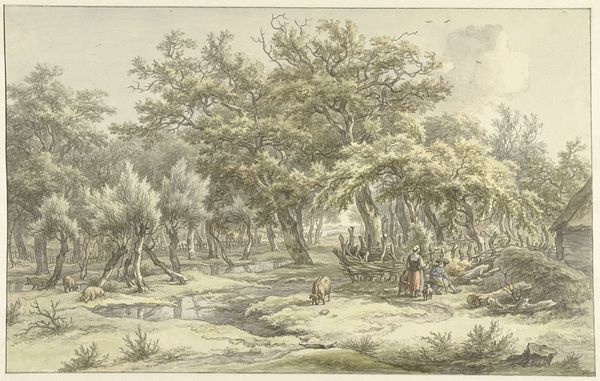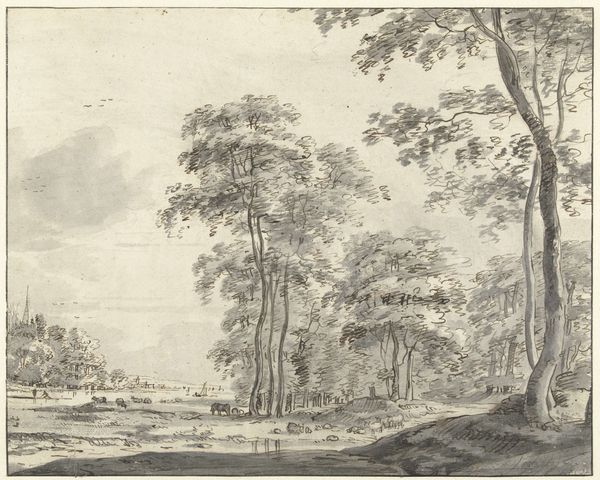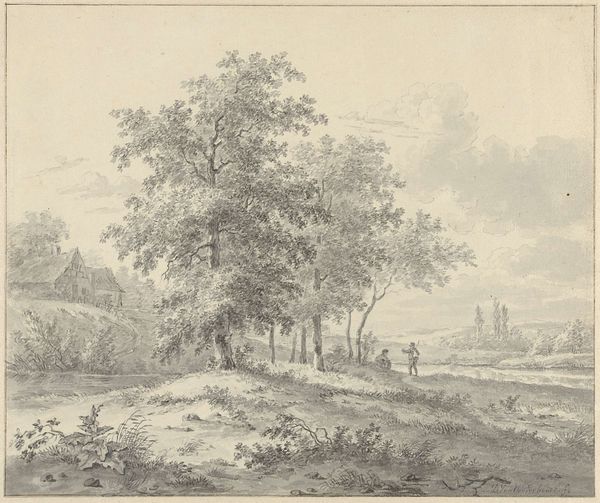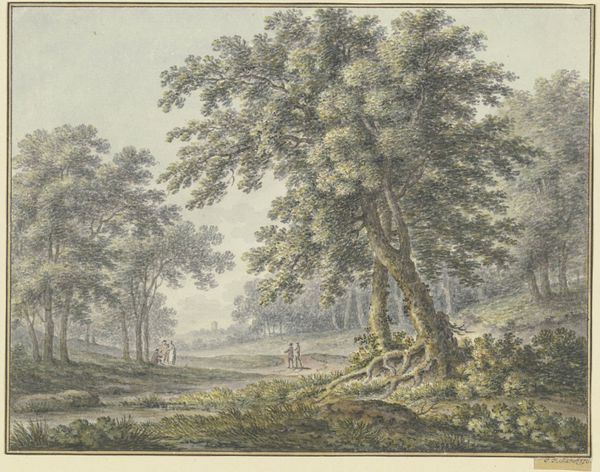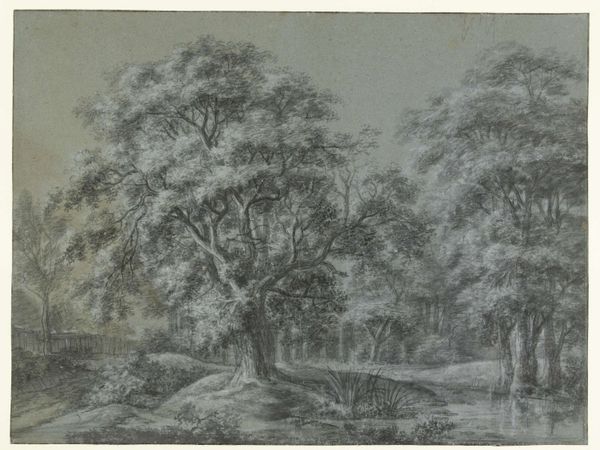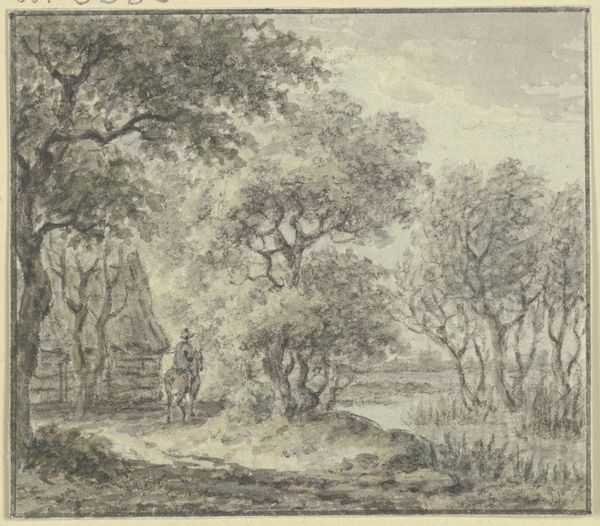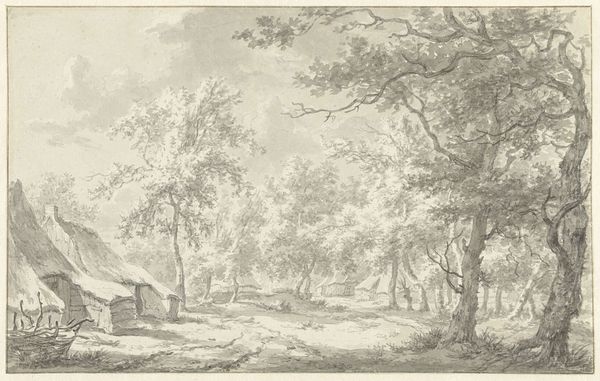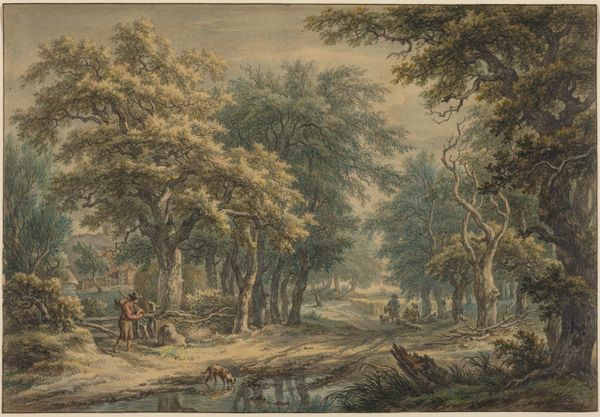
painting, plein-air, watercolor
#
painting
#
plein-air
#
landscape
#
watercolor
#
romanticism
#
watercolor
Dimensions: height 327 mm, width 522 mm
Copyright: Rijks Museum: Open Domain
Editor: We're looking at Egbert van Drielst's "Landscape in Eext (Drenthe Province)" from 1793. It’s a watercolor piece depicting a tranquil scene. I'm struck by the incredible detail Van Drielst achieves with watercolor; the way the light reflects on the water is gorgeous! How should we understand a piece like this? Curator: From a materialist perspective, I see more than just a landscape. Consider the materials themselves: watercolor was becoming more accessible, moving from a tool primarily for scientific illustration to a medium for broader artistic expression. Who had access to this kind of leisure, to both observe and render the land in this way? Editor: So, it’s about more than just a pretty scene? Curator: Precisely. Think about the labor involved in creating the pigments themselves, the paper… Who produced those? What were their lives like? Van Drielst’s depiction of rural life, bathed in this idyllic light, obscures those material realities. We should also consider the tradition of plein-air painting at the time. What's omitted when capturing an open air painting and where would the painting have been created? Editor: That's a really interesting way to look at it! So by considering the materials and the means of production, we reveal a whole different layer of meaning in the work. Curator: Exactly. By considering the social and economic contexts in which art is created and consumed, we challenge the romantic narrative often associated with landscapes. What social narrative do we miss at first glance? Editor: I learned a lot just now, like interrogating what is unsaid about labour and social realities! I'll be more careful next time before getting caught up in beauty. Curator: Indeed, viewing art through this lens transforms it into a source of societal awareness.
Comments
rijksmuseum about 2 years ago
⋮
Egbert van Drielst was 22 when he moved from the province of Groningen to Amsterdam. As a landscape painter and draughtsman, he found inspiration in the dunes of Haarlem, the heathland of the Gooi district and above all, the still virtually unspoiled country of Drenthe Province. Van Drielst visited Drenthe almost every summer to sketch landscape studies. During the winter, they provided material for his paintings and detailed drawings.
Join the conversation
Join millions of artists and users on Artera today and experience the ultimate creative platform.
